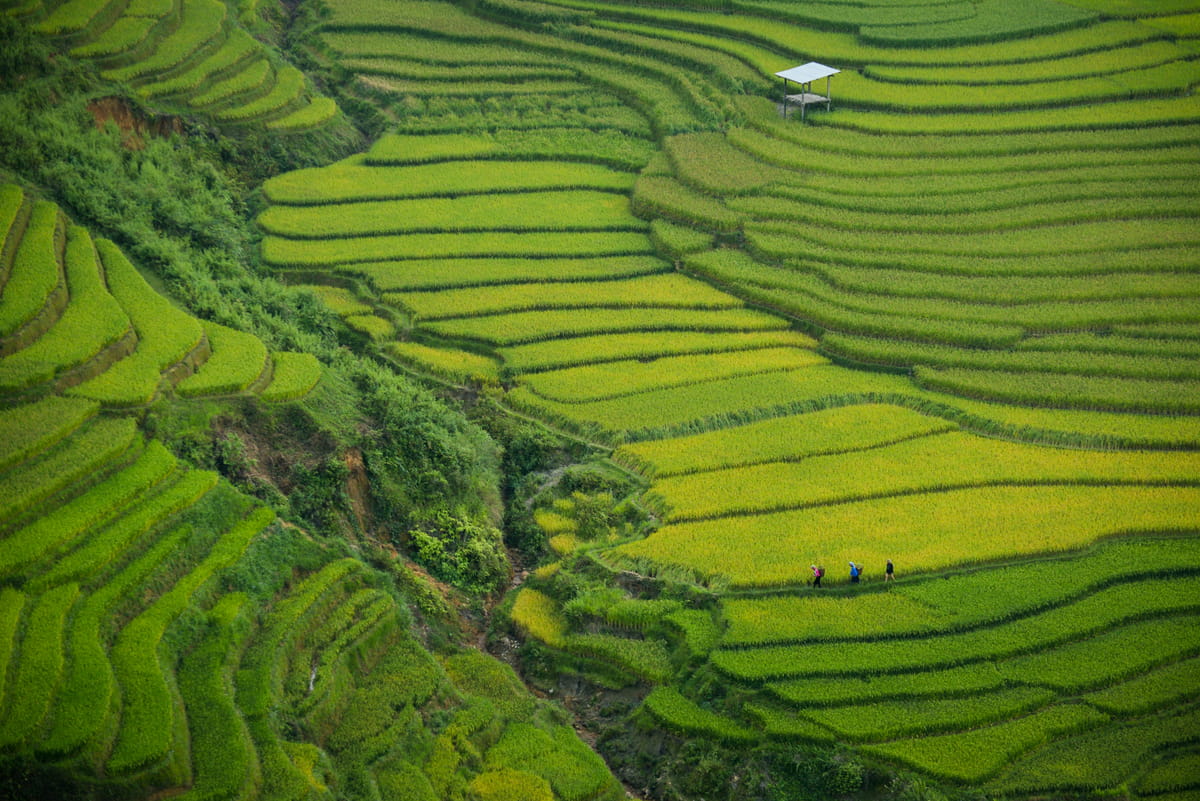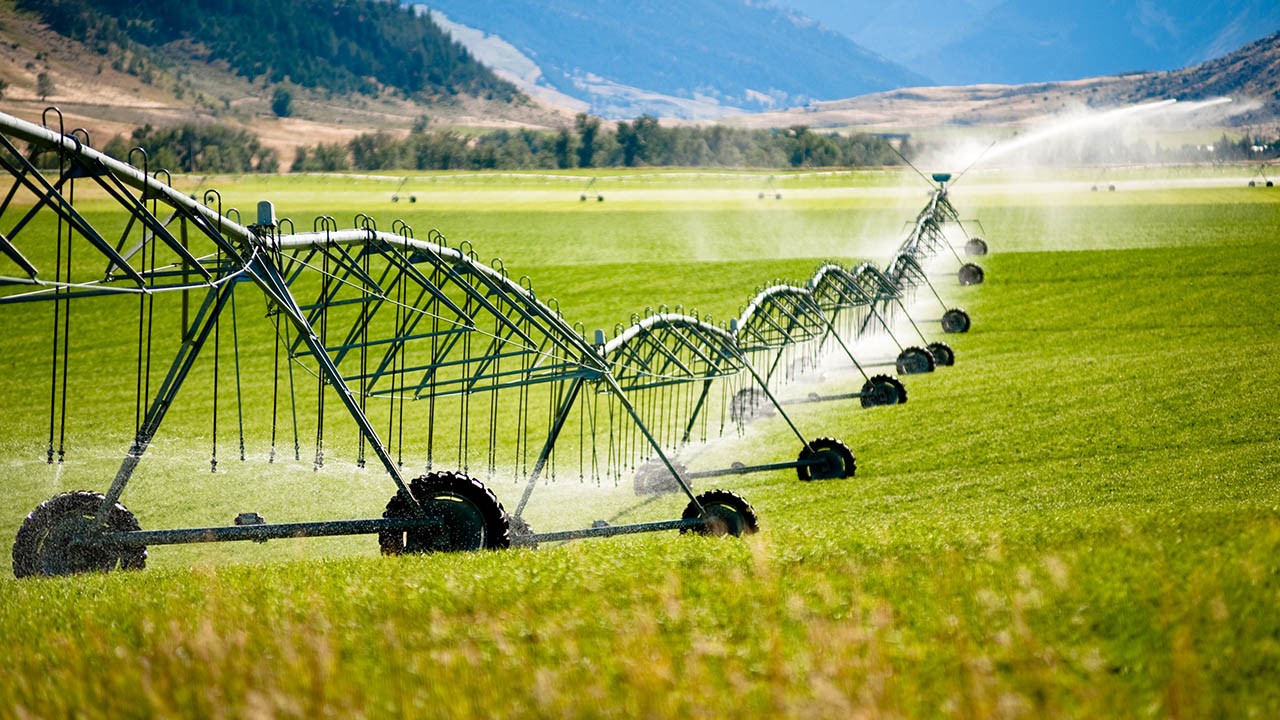
Watch short for this article (5 slides)
Scorched Fields, Soaring Prices: The Devastating Impact of Extreme Heat on Southeast Asia's Rice Basket
Southeast Asia, a region intrinsically linked to the cultivation and consumption of rice, is currently grappling with unprecedented heatwaves, pushing temperatures to record highs. Beyond the immediate human discomfort, this intense heat poses a severe and escalating threat to the region's agricultural heartland, particularly its vital rice production. Rice, the staple food for billions, is highly sensitive to temperature fluctuations, and prolonged exposure to extreme heat is leading to reduced yields, jeopardizing food security, driving up prices, and destabilizing the livelihoods of millions of smallholder farmers. This article delves into the specific ways extreme heat impacts rice cultivation, explores the cascading economic and social consequences, and examines the urgent need for adaptation and mitigation strategies.

Photo by Doan Tuan on Unsplash
Rice: A Climate-Sensitive Staple Under Pressure
Rice is more than just food in Southeast Asia; it's deeply embedded in the culture, economy, and daily life of nations like Vietnam, Thailand, the Philippines, Indonesia, and Myanmar. These countries are among the world's top rice producers and consumers. However, rice cultivation, particularly the commonly grown wet-paddy rice, is highly dependent on specific environmental conditions:
- Water Availability: Requires significant amounts of water, making it vulnerable to drought, which often accompanies heatwaves.
- Temperature Sensitivity: Optimal temperatures for growth vary by variety and stage, but extreme heat poses significant risks throughout the lifecycle. Traditional varieties often lack tolerance to sustained high temperatures.
The intensification of heatwaves, widely linked by climate scientists to anthropogenic global warming, directly threatens these requirements.
The Physiological Toll: How Extreme Heat Damages Rice Plants
Extreme heat impacts rice plants at multiple physiological levels, particularly when temperatures exceed critical thresholds, often cited as being above **35°C (95°F)**, especially during sensitive growth stages:
- Disrupted Photosynthesis and Growth: High temperatures can reduce the efficiency of photosynthesis, the process plants use to convert sunlight into energy. This leads to slower growth, stunted plants, reduced tiller formation (the stems that produce grain panicles), and ultimately lower biomass accumulation.
- Flowering Stage Failure (Critical Vulnerability): The flowering stage (anthesis), when pollination and fertilization occur, is exceptionally sensitive to heat.
- Pollen Sterility: High temperatures can damage pollen grains, reducing their viability or preventing pollen tube growth, leading to failed fertilization.
- Spikelet Sterility: Heat stress can cause spikelets (the individual flowers on the rice panicle) to become sterile, meaning they produce no grain even if pollination seemingly occurs. This is a major cause of yield loss under heat stress.
- Reduced Flowering Duration: Heat can shorten the period during which flowers are receptive, further reducing the chances of successful pollination.
- Impaired Grain Filling: Even if fertilization is successful, high temperatures during the grain-filling period (when the grain develops and accumulates starch) can:
- Shorten the filling duration, resulting in smaller, lighter grains.
- Reduce starch accumulation, leading to lower grain weight and potentially lower quality (e.g., increased "chalkiness").
- Affect nutrient composition.
- Increased Water Stress (Evapotranspiration): High temperatures dramatically increase the rate at which water evaporates from the soil and transpires from the plant's leaves (evapotranspiration). This rapidly depletes soil moisture and increases the plant's water demand, exacerbating the impact of any concurrent reduction in rainfall or irrigation availability, leading to drought stress which further compounds heat stress effects.
Compounding Threats: Heat Fuels Pests and Diseases
Warmer conditions create a more favorable environment for many rice pests and diseases, adding another layer of stress to heat-weakened crops:
- Accelerated Pest Life Cycles: Warmer temperatures can speed up the reproductive cycles of insect pests like the **Brown Planthopper (BPH)**, stem borers, and leaf folders, leading to larger populations and more frequent outbreaks. Climate change can also expand the geographic range of certain pests.
- Favorable Conditions for Diseases: High temperatures combined with humidity (which can still occur during heatwaves, especially in irrigated paddies) promote the growth and spread of fungal diseases like **Rice Blast** (*Magnaporthe oryzae*) and bacterial diseases like **Bacterial Leaf Blight** (*Xanthomonas oryzae*).
- Weakened Plant Defenses: Heat-stressed plants often have weakened natural defense mechanisms, making them more susceptible to successful attacks by pests and pathogens.
Economic Shockwaves: From Farm Gates to Global Markets

Photo by cottonbro studio
The impact of heat-induced reductions in rice yield extends far beyond individual farms:
- Surging Domestic Rice Prices: Reduced domestic supply directly leads to higher prices for consumers, disproportionately impacting low-income households where rice constitutes a major portion of the diet and budget. Recent significant price increases reported in countries like Indonesia (+23%), the Philippines (+18%), and Thailand (+15%) in 2024 exemplify this trend, straining household budgets and potentially fueling inflation. (Example source: Gro Intelligence on Rice Prices)
- Threats to Farmer Livelihoods: Smallholder farmers, who produce the majority of rice in the region, are particularly vulnerable.
- Income Loss: Lower yields directly translate to significantly reduced income.
- Increased Debt: Crop failures can lead to an inability to repay loans taken out for seeds, fertilizers, or equipment, trapping farmers in cycles of debt.
- Rising Input Costs: Increased need for irrigation (if available) or pest/disease control adds to production costs.
- Land Viability & Migration: In severe cases, repeated crop failures can make farming untenable, potentially forcing farmers off their land and contributing to rural-urban migration.
- National Food Security Risks: For countries heavily reliant on rice, production shortfalls can threaten national food security, necessitating costly imports (if available on the global market) and potentially leading to social unrest. Export restrictions by major producers (like India in recent years due to domestic concerns) further tighten global supplies.
- Global Market Volatility: As Southeast Asia is a major global rice exporter (especially Thailand and Vietnam), production shocks in the region can impact international rice prices and availability.
Building Resilience: Adaptation Strategies for Rice Farming

Photo by Arturo A
Addressing this crisis requires urgent adaptation measures at multiple levels:
- Developing Climate-Resilient Rice Varieties: This is a key long-term strategy. Research institutions like the International Rice Research Institute (IRRI) and national programs are actively breeding varieties with:
- Heat Tolerance: Specifically focusing on tolerance during the critical flowering stage.
- Drought Tolerance: Varieties that use water more efficiently or have deeper root systems.
- Combined Stress Tolerance: Developing varieties resistant to multiple stresses (heat, drought, salinity, pests/diseases).
- Methods: Conventional breeding, marker-assisted selection (MAS), and potentially genetic modification are employed.
- Improving Water Management and Irrigation Efficiency: Making better use of available water is crucial.
- Alternate Wetting and Drying (AWD): A water-saving technique where fields are periodically flooded and allowed to dry partially, reducing water use by up to 30% without significantly impacting yield, and also potentially reducing methane emissions.
- System of Rice Intensification (SRI): Focuses on managing water carefully (avoiding continuous flooding), transplanting younger seedlings singly with wider spacing, and improving soil health. Claims significant water savings and potential yield increases, though adoption varies.
- Infrastructure Investment: Modernizing irrigation canals, promoting rainwater harvesting, and exploring efficient techniques like drip irrigation where feasible (less common for paddy rice but possible for aerobic systems).
- Adjusting Agronomic Practices:
- Planting Dates: Shifting planting times to try and avoid peak heat periods during the sensitive flowering stage.
- Nutrient Management: Optimizing fertilizer application to improve plant health and resilience.
- Integrated Pest Management (IPM): Using a combination of techniques (biological control, resistant varieties, targeted pesticide use) to manage pests and diseases sustainably.
- Soil Health Improvement: Enhancing soil organic matter through composting or cover cropping improves water retention and nutrient availability.
- Strengthening Policy and Support Systems: Governments play a vital role through:
- Early Warning Systems: Providing farmers with timely forecasts of heatwaves and drought conditions.
- Crop Insurance Schemes: Offering affordable insurance programs to protect farmers against climate-related losses.
- Subsidies and Financial Support: Providing support for adopting climate-resilient varieties, efficient irrigation, or covering losses after extreme events.
- Infrastructure Investment: Funding improvements in irrigation, storage, and transportation infrastructure.
- Promoting Diversification: Encouraging farmers to grow other crops alongside or instead of rice to reduce reliance on a single vulnerable commodity.
The Overarching Need: Climate Change Mitigation

While adaptation strategies are essential for coping with current and near-term impacts, the ultimate solution lies in global efforts to mitigate climate change. Reducing greenhouse gas emissions to limit future temperature increases is fundamental to preventing heatwaves from becoming even more frequent and intense, thereby protecting the long-term viability of rice production and global food security.
Conclusion: Protecting a Staple in a Warming World
The intensifying heatwaves across Southeast Asia are sounding a critical alarm for the future of rice production. The physiological limits of rice plants are being tested, leading to reduced yields, economic hardship for farmers, rising consumer prices, and potential threats to regional and global food security. Addressing this challenge requires a concerted and integrated approach – investing heavily in climate-resilient agriculture through breeding and improved water/soil management, strengthening government support systems for farmers, and, most importantly, accelerating global action to curb the greenhouse gas emissions driving the extreme heat itself. Protecting this vital staple crop is essential for feeding billions and maintaining stability in one of the world's most populous regions.